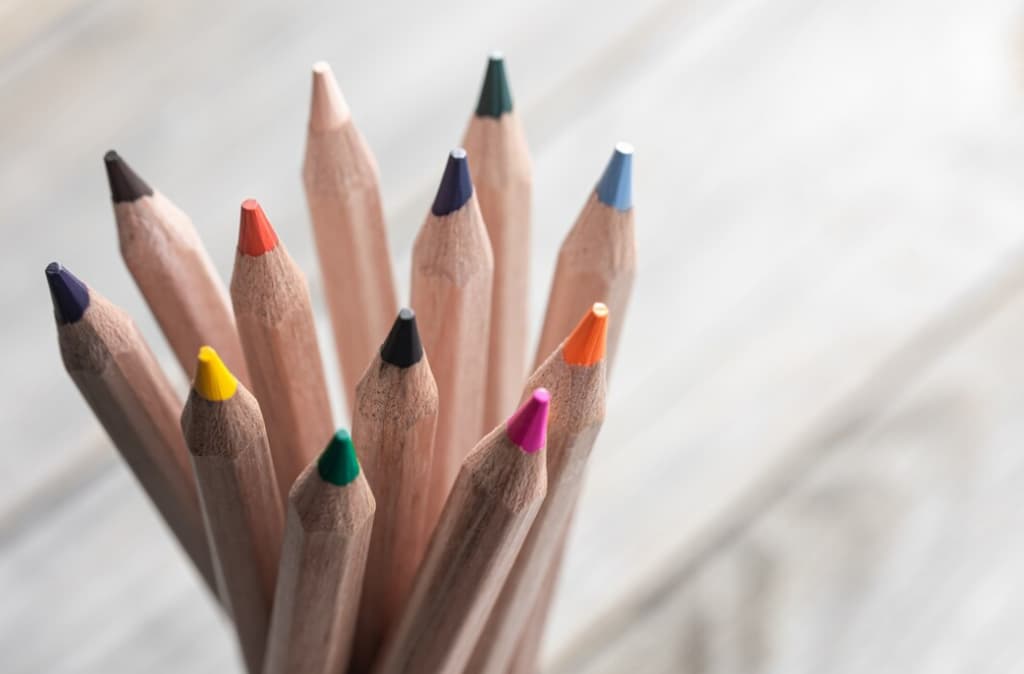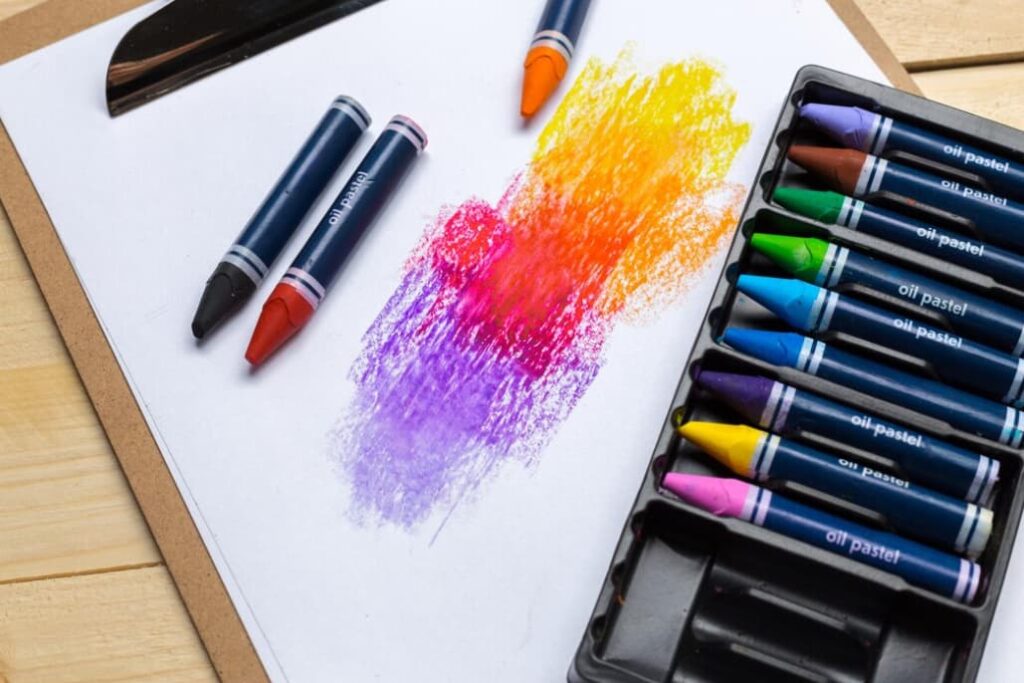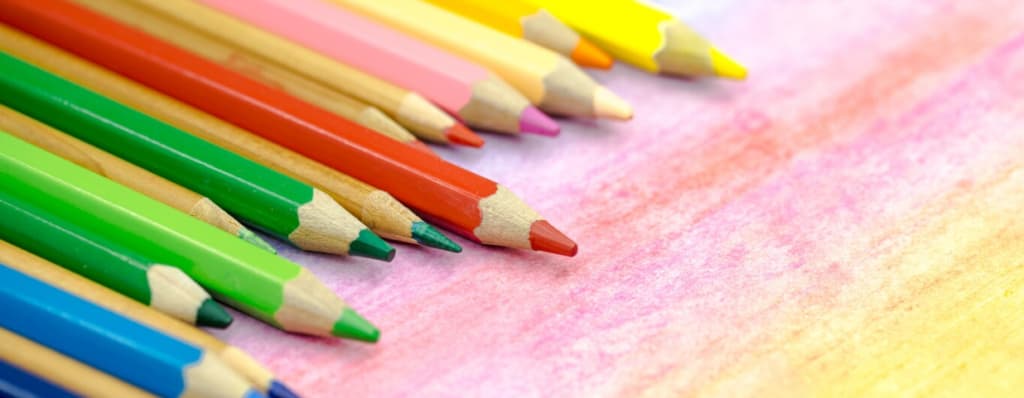Having published numerous articles on human drawing, there’s an article, dedicated to enthusiasts of color pencil drawing. The inaugural article of this series will delve into various tips gleaned from initial practice sessions in color pencil drawing.
Topics to be explored include:
- Techniques for cleaning pencil residue;
- Effective methods for blending color pencil hues;
- The necessity of a kneaded eraser in your toolkit;
- The impactful use of toned papers in drawings;
- Layering strategies, with and without the use of markers;
- The importance of beginning with a clean sketch;
- Tips for realistically drawing hair.
Choose a Top-Tier Color Pencil Collection
Ensure that you equip yourself with a high-quality set of colored pencils for your artistic endeavors. The ones that are frequently showcased across social media platforms like TikTok, Instagram, and Pinterest are the renowned Prismacolor pencils. From personal experience and widespread acclaim, these pencils live up to their reputation, delivering vibrant colors and a smooth application that can significantly enhance your artwork.
Employing a Cosmetic Brush for Pencil Debris Removal
Resist the urge to use your fingers for tidying up pencil remnants, as it’s a quick way to introduce unwanted smudges into your color pencil artwork. A better alternative is to use a soft cosmetic brush, which can effectively and gently sweep away any loose pigment without disturbing the underlying work. This approach allows for a clean, unblemished finish. Light strokes are sufficient — there’s no need for added pressure that could potentially smear your carefully laid colors.
Mastering Color Blending with a Mid-Tone Pencil

Blending colors is a critical step in color pencil art to achieve a refined and cohesive look. Through trial and improvement, two key strategies have emerged. Firstly, utilizing a white pencil with circular strokes can wonderfully soften and blend the color edges, aiding in the creation of smooth gradients. However, if the white pencil appears to mute the colors, a mid-tone pencil — a hue that falls between the colors you’re blending — can be used instead. This technique helps preserve the vibrancy while still effectively merging the shades.
The Essential Kneaded Eraser for Color Pencil Art
While some art tools may seem unnecessary, the kneaded eraser is not one to overlook, especially for those new to color pencil art. This malleable eraser is multifaceted: it’s perfect for removing preliminary sketches without leaving a trace, lightening areas of color when needed, and softening or blending away harsh lines for a more refined finish. Its versatility makes it a superior choice to traditional erasers, and it comes highly recommended for artists seeking precision and subtlety in their work.
The Advantage of Toned Paper in Color Pencil Art
Toned paper, particularly in shades like tan, can be a game-changer, though preferences may vary. Colors tend to display with greater authenticity and depth on toned paper compared to white. For example, using vintage-toned Virgin Cotton Handmade Paper can offer a unique and rich canvas that enhances the natural appearance of colors and adds a classic touch to your artwork.
Layering Color Pencils atop Marker Foundations
Inverting the traditional layering sequence, many artists find that starting with a marker base leads to more polished and vibrant color pencil drawings. This technique, gleaned from Copic marker enthusiasts, allows for a smoother application of color pencils, helping to create a seamless blend and a flawless finish. For those curious about the technique, observing artists on social media platforms like Instagram can provide valuable insights into the process and showcase the stunning results achievable by layering color pencils over markers.
Beginning with a Detailed Preliminary Sketch
The importance of starting with a detailed sketch cannot be overstated, especially for beginners.
- A clean and precise initial sketch serves as a visual guide, offering a stress-free path through the artwork’s development;
- It not only makes the process more enjoyable but also aids in making informed creative choices;
- Adjustments and revisions are part of the process, but a solid sketch lays the groundwork for a smooth creative journey, helping to circumvent potential blocks and frustrations.
Mastering Hair Texture in Color Pencil Art

The task of drawing realistic hair, including fine details like lashes or whiskers, is a common hurdle for artists. It requires practice to master, but there are techniques to facilitate the process.
- Ensuring your colored pencils are finely sharpened is one; it grants more precision for intricate details;
- Another technique is to ‘impress’ the paper—use a blunt point, like a mechanical pencil without lead or a cutter’s edge, to gently indent the paper where hair should be;
- When color is applied over these indentations, it results in a natural hair-like effect, simplifying the challenge for those new to color pencil drawing.
Conclusion
Creating realistic portraits with color pencils is an artful journey that demands skill, patience, and creativity. The guide provided here equips artists to navigate the complexities of portraying lifelike features and emotions with this versatile medium. From mastering facial proportions to exploring skin tones, the techniques shared empower artists to bring their creations to life. With each stroke, a unique artistic voice emerges, emphasizing the importance of practice. Embrace the joy of blending, layering, and refining details, and witness your color pencil portraits evolve into captivating, realistic expressions. Let this guide be your companion on this artistic voyage, unlocking the secrets to transforming canvases into windows to the soul.
